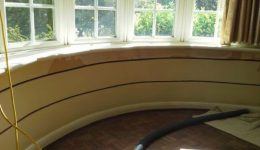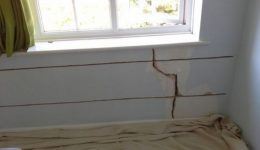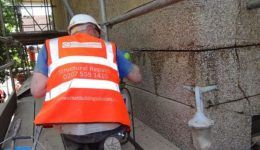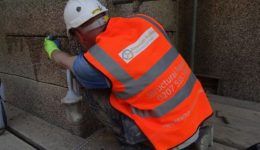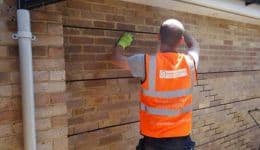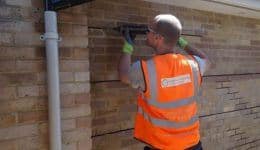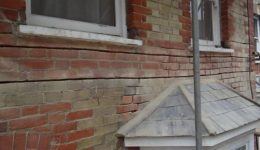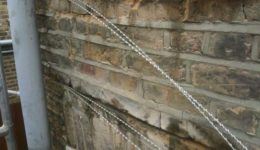
Bed Joint Reinforcement & Crack Repair Using Helical Bar
Bed Joint Reinforcement and crack stitching, are methods of crack repair that involve the introduction of high tensile strength, stainless-steel helical bar. The bars are embedded into the horizontal mortar joints in the wall, using purpose made grout. This tried and tested method of repairing cracks in walls is designed to reconnect the masonry on either side of the crack, restoring the wall’s structural integrity.
Depending on the existing mortar, Newman’s use either cementitious or lime-based grout. This enables us to use helical crack repair on historical and even listed buildings.
Cracks in brickwork and masonry can be caused by a number of factors. These include, but are not limited to, thermal movement, failed drainage, poor construction, installation of replacement doors and windows, and vegetation such as tree roots.
The shape and direction of cracks can offer clues as to the cause of cracking. Horizontal cracking, tapered cracks, cracks that follow the bed joints around the bricks and cracks through bricks, are all tell-tale signs that an experienced structural surveyor will use in both diagnosing the cause and specifying the repair.
Crack Stitching
Crack repair is carried out using short lengths of helical bar, commonly one metre long. These are installed into the horizontal mortar joint reconnecting the masonry on either side of the crack. Ideally, the bar is inserted centrally across the crack, with 500mm of masonry on either side. Bar will be inserted every four or five courses of brickwork, depending on the length of the crack.
Bed Joint Reinforcement
Where there is extensive cracking or multiple cracks along the same horizontal plane, long lengths of helical bar are used to create masonry beams. As well as reconnecting the masonry on either side of the cracks in the wall, masonry beaming redistributes the vertical structural loads across the width of the beams. In severe cases, long lengths of helical bar can be used to wrap around the building, reinforcing the entire structure. In cases where subsidence has occurred, the introduction of the helical system can minimise the need for piling or underpinning.
Masonry beams can also be introduced to allow for the safe removal of doors, windows and even masonry during renovation projects.
Crack Repair Video
Combined Methods
Using Bed Joint Reinforcement and Crack Stitching combined with other helical ties and repair strategies, we are able to provide a permanent repair solution for lintel failure, lateral restraint, retaining and boundary wall restraint and repair.
Importantly, the installation process is far less intrusive than traditional methods, such as take down and rebuild, often allowing the premises to remain occupied.
Disruptive removal and re-build techniques are often avoided by the introduction of helical bar, and the aesthetics of the damaged structure are retained.
This method of repairing cracks in masonry is especially suited to listed buildings and in applications where it is not practical for new materials to be used. The repairs are hidden in the bed joint and, once re-pointed or rendered, provide a maintenance free, aesthetically pleasing repair that is often unnoticeable.
Repair Specification and Quick Estimate
Based on a full description of the issue and sufficient images, it may be possible for one of our surveyors to provide a repair specification and estimated cost. Please complete the Quick Estimate Form here and give as much information as possible.
